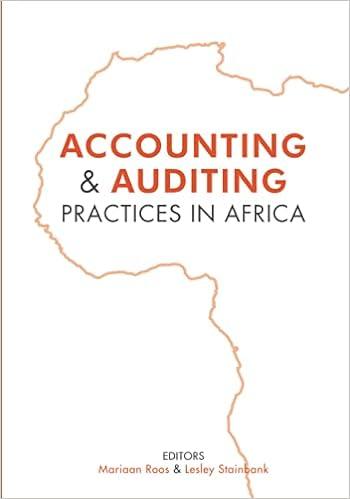Answered step by step
Verified Expert Solution
Question
1 Approved Answer
Question 5 1 pts Present an equation that describes the physical flow in process costing when there are beginning inventories in work in process. Beginning









Question 5 1 pts Present an equation that describes the physical flow in process costing when there are beginning inventories in work in process. Beginning inventories + Units started + Work in process Units transferred out + Finished goods + Ending inventories. O Beginning inventories + Units started = Units transferred out + Ending inventories. O Beginning inventories + Units transferred out = Units started + Ending inventories. O Beginning inventories + Units started - Cost of goods sold = Units transferred out - Finished goods + Ending inventories. Previous Next Question 6 1 pts How are transferred-in costs similar to direct materials costs? How are they different? O Transferred-in costs are accounted for operationally the same as direct materials added at the beginning of a production process. They differ from direct material costs because they are a combination of direct material and conversion costs from a previous department; thus, calling them a direct-material cost is inappropriate. The costs are accounted for differently due to the fact that direct-material costs are added at the beginning of a production process and transferred-in costs are added in at the end of the production process. They are similar due to the fact they both are derived from direct material costs. Transferred-in costs are accounted for operationally the same as direct materials added at the end of a production process. They differ from direct material costs because they are a combination of direct labour, overhead and conversion costs from a previous department; thus, calling them a direct-material cost is inappropriate. The costs are accounted for differently due to the fact that direct-material costs are added at the end of a production process and transferred-in costs are added in at the beginning of the production process. They are similar due to the fact they both are derived from direct material costs. Previous Next Question 7 1 pts A process costing system is most suitable for businesses that manufacture batches of unique products or provide specialized services. True False Previous Next Question 1 1 pts Contrast activity-based costing (ABC) with activity-based management (ABM). Activity-based management is using activity-based cost information to improve the operations of an organization. Managers use ABC information for decision making, planning, and control purposes. Cost information is vital for each of these purposes. Activity-based cost information is using activity-based management to improve the operations of an organization. Managers use ABM information for decision making, planning, and control purposes. Appropriate activity-based management is vital for each of these purposes. Activity-based management is using a traditional costing system to improve the operations of an organization, while activity-based costing provides information regarding customer costs to improve the financial position of an organization. O None of the above. Next D Question 2 1 pts In activity-based costing systems, the system first accumulates indirect costs for and then assigns these costs to O products; territories activities; cost objects O products; departments cost objects; types of customers Previous Next Question 8 Activity-based costing systems focus on accumulating costs into key activities instead of departments. O True False Question 9 1 pts Under the traditional approach to cost allocation, the costs in each cost pool are allocated to a product in proportion to the product's usage of the O budgeted capacity cost-allocation base O cost pool available capacity Identify the correct statement with respect to benchmarking. Benchmarking is the process of allocating indirect costs to cost objects in proportion to the cost objects use of a particular cost allocation base. Benchmarking is the process of tracing direct costs to the specific cost objects and comparing the results to management's goals. Benchmarking is the process of comparing actual financial statements against budgeted financial statements and evaluating the management team based on the results. Benchmarking is the continuous process of comparing products, services, and activities against the best industry standards. Companies use benchmarking as a tool to help measure their competitive posture. Benchmarks can come from within the organization, from competing organizations, or from other organizations having similar processes. Question 7 1 pts How are costs of various overhead resources allocated to products, services, or customers in an ABC system? First, managers identify the key activities in the organization, and they collect overhead costs for each activity. Then each activity costs are allocated in proportion to the amounts for which the products are sold. First, managers identify the key activities in the organization, and they collect overhead costs for each activity. Cost drivers are then selected for each activity, and those cost drivers are used to allocate the costs to the products, services, or customers. None of the answers given First, managers identify the key activities in the organization, and they collect overhead costs for each activity. Then the cost drivers are selected for each activity based on the budgeted sales method, which allocated costs in proportion to budgeted sales, even though the costs do not vary in proportion to sales
Step by Step Solution
There are 3 Steps involved in it
Step: 1

Get Instant Access to Expert-Tailored Solutions
See step-by-step solutions with expert insights and AI powered tools for academic success
Step: 2

Step: 3

Ace Your Homework with AI
Get the answers you need in no time with our AI-driven, step-by-step assistance
Get Started


